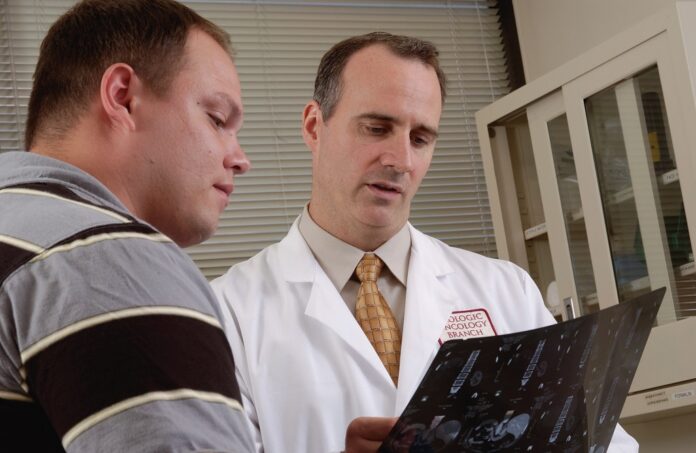Hormone replacement therapy or HRT is a female hormone-containing medicine, and the medicine replaces estrogen that the body stops producing after menopause. Hot flashes or vaginal soreness are two frequent menopausal symptoms treated with hormone treatment. Hormone replacement therapy (HRT) is a treatment that can help relieve symptoms of menopause. It involves replacing the hormones that the body is no longer producing, which can help to reduce hot flashes, and vaginal dryness. HRT can also help to improve mood swings and sleep problems. It is essential to talk to a doctor before starting HRT, as some risks are associated with the treatment. It can be taken in pills, patches, or creams. The most common hormone used in hormone replacement therapy is estrogen. Estrogen can help to reduce hot flashes, night sweats, and vaginal dryness.
Hormone therapy, on the other hand, comes with some hazards. These hazards vary according to the hormone replacement therapy, the amount, the time you take the prescription, and your health concerns. Hormone therapy must be adjusted for each individual and regularly reevaluated to ensure that the benefits outweigh the hazards.
What are the most common Hormone Replacement Therapies?
Hormone replacement therapy or HRT aims to restore the estrogen that your body stops producing after menopause. Estrogen therapy is divided into two types:
1. Hormone replacement therapy
Systemic estrogen, available as a tablet, ring, gel, skin patch, cream, or spray, contains a more immense amount of estrogen absorbed. It could be used to address any of the menopausal symptoms.
2. Vaginal products with a low dose
Low-dose vaginal estrogen treatments, including creams, tablets, and rings, reduce the amount of estrogen taken into the body. As a result, low-dose vaginal formulations are often reserved for treating menopausal vaginal and urinary symptoms.
If your uterus hasn’t been removed, your doctor will likely give you estrogen and progesterone (progesterone-like medication). This is because estrogen, when it’s not balanced with progesterone, can drive uterine lining growth, raising the risk of developing cancer. You may not have to take progestin if your uterus has been removed (hysterectomy).
Risks associated with hormone therapy
Hormone replacement therapy using an estrogen-progestin tablet (Prempro) increased the risk of some severe conditions in the most prominent medical trial to date, including:
- Heart problems
- Stroke
- Clots of blood
- Breast cancer affects women.
According to an additional study, these risks vary depending on:
1. Age
Women who start hormone therapy at 60 or later, or even more than ten years after menopause, are more likely to develop the problems listed above. However, the advantages exceed the hazards if hormone replacement therapy is begun well before the age of 60 or even within ten years following menopause.
2. Hormone therapy of this type
Hormone therapy hazards differ depending on whether estrogen is administered alone or in combination with progestin and the dose and kind of estrogen used.
3. Medical history
In assessing if hormone replacement treatment is proper for you, consider your family history, personal medical history, cancer risk, cardiovascular disease, strokes, blood clots, liver disease, and osteoporosis. When considering if hormone therapy is suitable for you, you or your doctor should consider these risks.
Who is a candidate for hormone therapy?
When you’re healthy and meet the following criteria, the advantages of hormone replacement therapy may exceed the dangers:
Hot flashes might range from mild to severe :
For the management of bothersome menopausal hot flashes & night sweats, systemic estrogen therapy remains an effective treatment.
Have you had other menopausal symptoms?
Estrogen can help with menopausal vaginal symptoms such as dryness, itching, burning, and pain during intercourse.
It is necessary to avoid the bone loss or fracture
Systemic estrogen helps in the prevention of osteoporosis, a bone-thinning condition. On the other hand, doctors commonly prescribe bisphosphonates to treat osteoporosis.
What could you do if hormone therapy isn’t an option?
Menopausal hot flashes can be managed with healthy lifestyle changes like staying cool, avoiding caffeinated drinks and alcohol, and practising timed calm breathing or other relaxation exercises. Several non-hormonal prescription drugs can help with hot flashes.
A vaginal moisturizer or lubricant can help with vaginal issues like dryness or uncomfortable intercourse. You could also check with your doctor about ospemifene (Osphena), a prescription medicine that can help with painful intercourse bouts.
In the end, hormone therapy isn’t entirely beneficial or harmful. Consult a doctor about your specific symptoms and health concerns to see if hormone replacement therapy is an appropriate treatment option for you. Throughout your menopausal years, keep the conversation flowing.
Recommendations may change as researchers further investigate hormone replacement therapy and other menopausal treatments. If your menopausal symptoms persist, visit your physician regularly to discuss therapy alternatives.
Photo by National Cancer Institute










